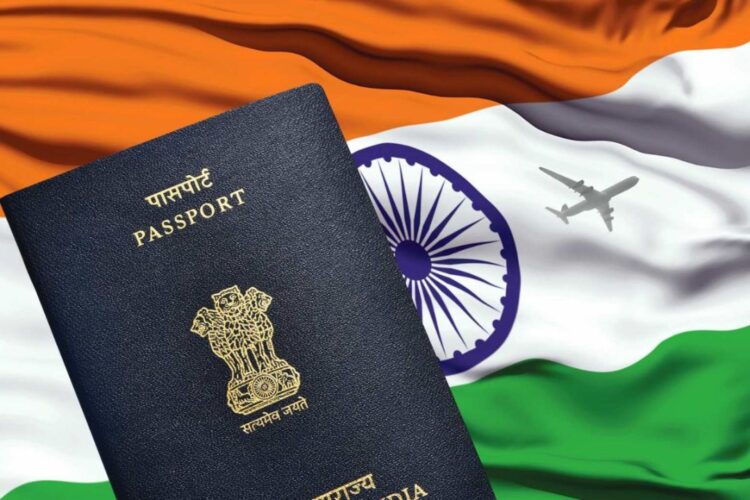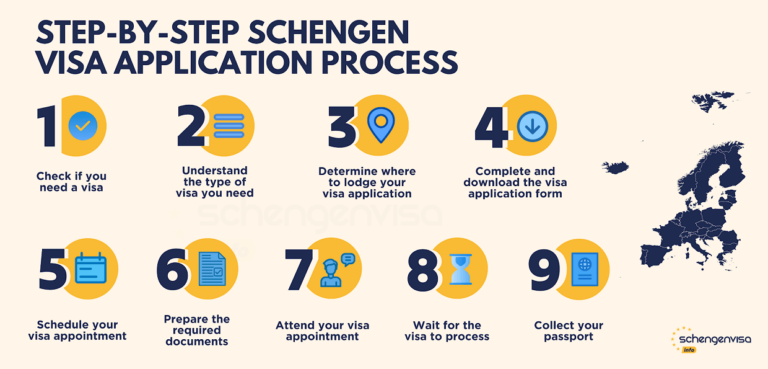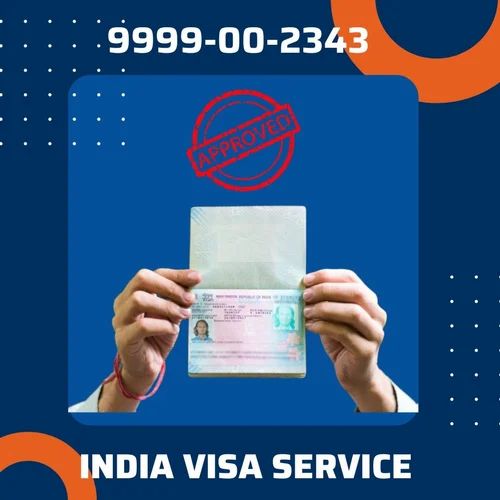Unlocking India: Your Guide to Securing an Indian Entry Visa

Getting Your Indian Visa
Planning your adventure to India starts with securing the right visa for your visit. This guide will help you understand the different visa categories and provide the latest updates for USA nationals.
Indian Visa Categories
India offers a variety of visas to cater to different purposes of travel. Understanding these categories is essential for choosing the right visa for your needs. Some of the key visa categories include:
| Visa Type | Purpose |
|---|---|
| Tourist Visa | Recreational trips, tourism |
| Business Visa | Business-related activities, conferences |
| Medical Visa | Medical treatments, healthcare |
| Employment Visa | Long-term work in India, job assignments |
| Student Visa | Academic studies, education |
For more details on each type, visit our page on types of Indian visas.
Depending on your specific needs, you may also find information about other visas such as the Indian visa for minors or the Indian visa for spouse.
USA Nationals Visa Update
For travelers from the USA, there have been significant updates regarding the Indian visa process. As of March 16, 2022, the Government of India has restored all valid regular paper and e-visas, including long-term 10-year tourist visas and 5-year e-visas for USA nationals (Consulate General of India, San Francisco).
This update means that:
- You can now apply for a fresh long-term (10 years) tourist visa.
- If you hold a valid visa, you can travel on it until its expiry date.
- Always carry both your new and old passports if your passport is nearing expiration but you still have a valid visa. This ensures smooth travel and entry into India.
| Visa Type | Duration | Validity |
|---|---|---|
| E-Visa | 5 Years | Multiple entries |
| Regular Paper Visa | 10 Years | Multiple entries |
Ensure you follow all Indian visa requirements and have your documents ready for a seamless application process. For information on visa application costs, visit Indian visa fees.
Get started with your application process through apply for Indian visa online and keep an eye on timelines by checking Indian visa processing time.
For queries, you can reach out to the Indian visa helpline. Always stay updated with the latest information to ensure a smooth travel experience to India.
Understanding Indian Tourist Visas
When planning to visit India, understanding the specifics of an Indian tourist visa is crucial. This section covers essential details such as length of stay restrictions and processing times.
Length of Stay Restrictions
The maximum stay by a foreigner in India on an e-Tourist visa or regular paper Tourist visa, whether single or multiple entries, is restricted to 180 days per calendar year. Travelers should not attempt to enter India through land routes on a tourist visa, as it is not permitted.
The Indian Tourist eVisa provides three validity options:
- 30 days
- 1 year
- 5 years
Each option has different provisions for entries and durations of stay:
| Visa Type | Validity Period | Number of Entries | Maximum Length of Stay |
|---|---|---|---|
| 30-Day eVisa | 30 Days | Double Entry | 30 Days per Visit |
| 1-Year eVisa | 1 Year | Multiple Entry | 180 Days per Visit |
| 5-Year eVisa | 5 Years | Multiple Entry | 180 Days per Visit |
Learn more about the Indian visa validity period to ensure compliance with visa regulations.
Processing Time for Indian Visas
Tourist visas for visiting India can be processed relatively quickly, typically requiring 4-5 working days for US passport holders, excluding VFS mailing time (Consulate General of India, San Francisco). However, it’s advisable to apply well in advance to account for any unexpected delays or additional requirements.
| Processing Steps | Typical Timeframe | Notes |
|---|---|---|
| Online Application Submission | 1 Day | Apply via apply for Indian visa online |
| Processing by Consulate | 4-5 Working Days | Excludes VFS mailing time |
| Mailing Time (to and from VFS) | Variable | Depends on location and courier service |
While the eVisa system offers a convenient and faster alternative, it cannot be extended, transferred, cancelled, or amended (iVisa). If you need to prolong your stay, consider applying for a new eVisa instead. For more details, check out our pages on indian visa processing time and indian visa extension rules.
Always ensure your passport is valid and complies with the visa requirements. If your passport is about to expire, you must carry both the old passport with the valid visa and the new passport while traveling (Consulate General of India, San Francisco). For comprehensive information, visit indian visa requirements.
Types of Visas for Specific Purposes
Securing an Indian entry visa can be simple if you know which type aligns with your travel goals. Whether you are visiting for leisure or specific activities, there are various types of visas to meet your needs.
Recreational and Sightseeing Visas
The Indian Tourist Visa (e-Tourist Visa) is ideally suited for recreation, sightseeing, visiting friends and relatives. This visa type is popular among tourists due to its flexible nature and relative ease of application (Consulate General of India, San Francisco). The e-Tourist Visa typically grants multiple entries and is valid for up to one year, but travelers must check the validity period and number of entries permitted.
| Visa Type | Validity | Entries Allowed | Processing Time |
|---|---|---|---|
| Tourist Visa | Up to 1 year | Multiple | 4-5 working days |
| e-Tourist Visa | Up to 1 year | Multiple | 4 working days |
For a detailed guide on how to apply, refer to our article on apply for indian visa online.
Yoga Programs and Medical Treatments
India is renowned for its yoga programs and holistic medicine offerings. Tourists interested in these programs can apply for short-term yoga program visas, which fall under the tourist visa category. However, if your primary purpose is medical treatment, an Indian Medical Visa is more appropriate.
The Indian Medical Visa allows for stays up to 60 days and permits three entries (iVisa). This visa ensures that patients and their attendants can come to India for healthcare at recognized specialized hospitals.
| Visa Type | Validity | Entries Allowed | Processing Time |
|---|---|---|---|
| Yoga Program Visa | Up to 1 year | Multiple | 4-5 working days |
| Medical Visa | Up to 60 days | 3 | 4 working days |
For more information, see our section on indian medical visa and indian visa for medical treatment.
By understanding the specific types of visas available for your travel purposes, you can ensure a smooth and compliant entry into India. For a comprehensive overview of all available visa options, be sure to visit types of indian visas.
For those interested in exploring recreational activities, don’t miss our guide on obtaining a Recreational and Sightseeing Visa. If you’re focused on wellness, our [Yoga Program Visa] and [Medical Treatment Visa] sections will offer you the detailed information you need.
Important Considerations for Visa Holders
Passport Validity & Visa Validity
When traveling to India, it’s important to be aware of the requirements surrounding your passport and visa. As an indian entry visa holder, you can travel on a valid visa until its expiry date, even if your passport is expiring soon. However, you must carry both the old passport containing the valid visa and your new passport while traveling.
Validity Comparison Table
| Document | Validity Requirement |
|---|---|
| Passport | Must be valid; carry both old and new if previous passport has valid visa |
| Indian Visa | Valid until the expiry date listed |
Always verify the indian visa validity period to ensure your travel plans align with the validity of your visa.
Pakistani Nationals and Dual Nationality
Special considerations apply to Pakistani nationals or individuals with dual nationality (Pakistan and USA). If you hold dual nationality and possess only one passport (USA), you must apply for an Indian visa on your USA passport (Consulate General of India, San Francisco). The required documents include a Certificate of Renunciation of Pakistani Citizenship or a copy of the Pakistan Overseas Card.
Required Documents for Pakistani Nationals with Dual Citizenship
| Document | Description |
|---|---|
| USA Passport | Primary travel document used to apply for the Indian visa |
| Certificate of Renunciation of Pakistani Citizenship | Proof of renunciation of Pakistani nationality |
| Pakistan Overseas Card | Alternatively accepted for visa application |
Ensure you adhere to these rules to avoid any complications during the application process. For more details on the specifics, visit our page on indian visa for Pakistani nationals.
For general information regarding visa applications, you may also find our sections on types of indian visas and indian visa documents checklist helpful.
Feel free to explore our detailed guides:
- apply for Indian visa online
- indian visa processing time
- indian visa extension rules
- indian visa sponsorship
Permits for Restricted Areas
Certain regions in India have specific restrictions for foreign visitors. If you intend to visit these areas, you must secure the necessary permits in addition to your Indian entry visa.
Protected/Restricted Area Permits
Foreign nationals planning to visit Protected or Restricted Areas in India need to apply for a Protected or Restricted Area Permit. This requirement is separate from obtaining an Indian visa for US citizens.
To obtain a Protected/Restricted Area Permit, submit your application to the concerned Indian state or the nearest Indian Mission/Post. The following table provides a general overview of the permit application process:
| Permit Type | Application Location | Processing Time |
|---|---|---|
| Protected Area Permit | Concerned Indian State or Indian Mission/Post | Varies; generally 4-6 weeks |
| Restricted Area Permit | Concerned Indian State or Indian Mission/Post | Varies; generally 4-6 weeks |
For specific details on how to apply, refer to the Bureau of Immigration (BOI).
Additional Requirements
In addition to applying for a permit, foreign travelers visiting for study, research, work, missionary activities, or planning to stay over 180 days must register their visit within 14 days of arrival with the Foreigners Regional Registration Office (FRRO) (Travel.State.Gov). Failure to register may result in fines and penalties.
Furthermore, foreign nationals visiting for childbirth must also register within 14 days. For in-depth guidelines, see the Bureau of Immigration (BOI), Ministry of Home Affairs.
For more information on various visa requirements and processes, visit:
Ensure you are well-prepared to avoid any complications during your travel to these restricted areas.
Extending Your Indian Visa
Extending your stay in India requires understanding the visa extension process and the consequences of overstaying your visa. Below, we provide detailed guidance to help you navigate these aspects effectively.
Visa Extension Process
To extend your Indian visa, you need to apply for an extension well in advance of your current visa’s expiration date. The process involves submitting an application, along with specific documentation required for each visa type, to the Foreign Regional Registration Office (FRRO) or the Foreigners Registration Office (FRO).
- Submit Online Application: Fill out the extension application on the e-FRRO platform.
- Required Documents:
- A valid passport with copies of your current visa and entry stamps.
- Recent passport-sized photographs.
- Proof of residence in India (rental agreement, utility bills, etc.).
- Supporting documents specific to your visa type (e.g., medical reports for a medical visa, employer letter for an employment visa, etc.).
- Pay the Fee: The extension application fee depends on the type and duration of the visa extension (indian visa fees).
- Processing Time: Typically, the visa extension takes 7 to 10 days from the submission of the application and payment.
It’s important to note that the electronic Indian Visa (eVisa) cannot be extended. If you are on an eVisa and need to extend your stay, you must apply for a new eVisa, as the existing one cannot be extended, canceled, transferred, or amended.
| Visa Type | Extension Processing Time | Fee (USD) |
|---|---|---|
| Tourist Visa | 7-10 days | Varies |
| Employment Visa | 7-10 days | Varies |
| Medical Visa | 7-10 days | Varies |
For more detailed information on specific document requirements for various visa types, refer to our indian visa documents checklist.
Consequences of Overstaying
Overstaying your Indian visa can lead to significant penalties and legal consequences. Being aware of these ramifications is crucial to avoid complications during your stay or future visits.
- Fines: Penalties can range from modest fines to substantial fees, depending on the duration of overstay.
- Legal Action: Extended overstays may result in legal action, leading to potential detention or legal charges.
- Future Visa Restrictions: Overstaying can impact your ability to secure future visas for India or other countries.
If you find yourself in a situation where you have overstayed, immediately contact the FRRO or FRO to apply for an indian exit visa, which may allow you to leave the country without further penalties.
For more advice on managing your visa status successfully, our article on indian visa extension rules offers additional insights. Make sure to stay informed and proactive to enjoy a hassle-free experience while exploring India.
For a comprehensive guide on processing your visa application and other related concerns, visit our indian visa application process.





